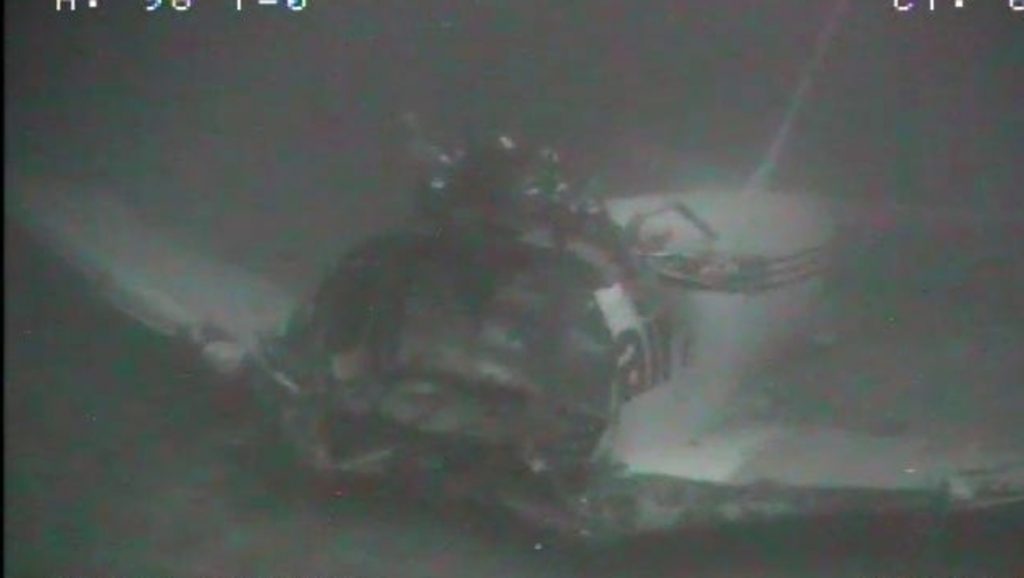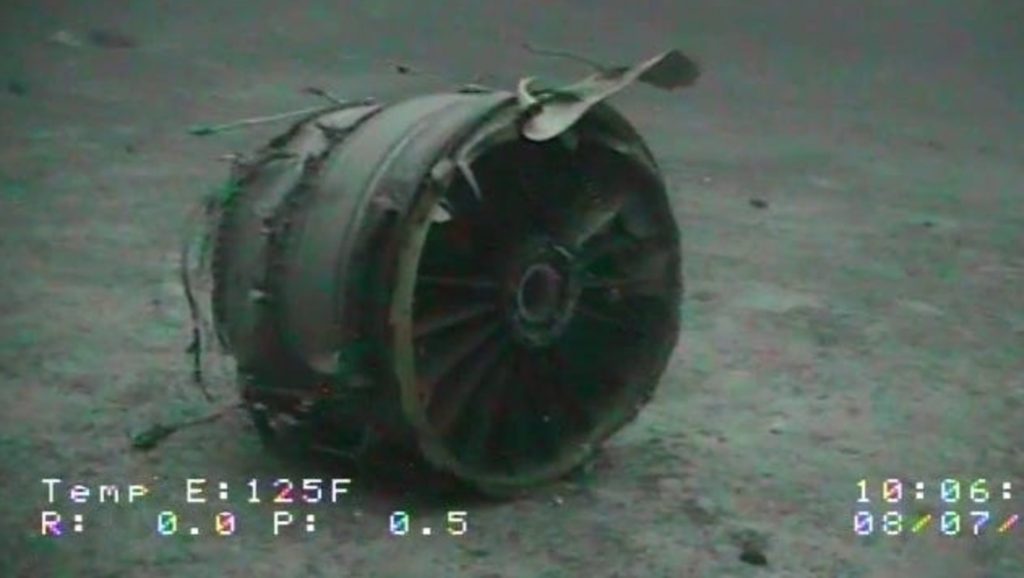
The National Transportation Safety Board (NTSB) has located a majority of the remains of the 47-year-old Boeing 737-200F, which performed an emergency landing in the ocean after engine troubles last week in Honolulu.
In the aftermath of Transair Flight 810, which almost claimed the lives of two passengers, the NTSB conducted an investigation to find the debris, ultimately located three kilometres offshore from ʻEwa Beach.
The NTSB was able to survey the debris field and recover major components of the downed aircraft, such as the aft fuselage, both wings and tails, both engines, and the forward fuselage.
All parts were found in the deep-sea floor between 360 and 420 feet, according to the NTSB statement.
Despite the parts discovered, the rest of the aircraft debris was too deep for divers to recover, and the NTSB was not able to recover the jet’s flight data and cockpit voice recorders – or ‘black box’.

Sea Engineering Inc. provided the Side Scan Sonar and Remotely Operated Vehicle (ROV) for the survey.
The company used its 43-foot workboat ‘Huki Pono’ for the operation, including a secondary GoPro video recording system, ultra-short-base wavelength transponder and Hypack Navigation and DGPS to monitor the ROV’s position on the ground, according to the NTSB.
The NTSB released a number of new updates containing valuable insight into the investigation so far, including the fact that the aircraft’s maintenance records have been documented and reviewed.
Also, investigators have reportedly examined a sister ship to become familiar with the configuration, and various other involved systems such as powerplant and air traffic control records have completed on-scene work.
Most notably, a fuel sample from another jet that operated on the same night was tested, however, no irregularities were identified.
Currently, the NTSB has completed 12 interviews with the flight crew, Federal Aviation Administration employees and Transair crew. The investigation is still ongoing.
In the early hours of 2 July, the 47-year-old Boeing 737-200F, operating Transair Flight 810, departed Honolulu at 1:33am local time headed for Maui’s Kahului Airport.
Shortly after take-off, the pilots were forced to turn back towards Honolulu, citing engine troubles, according to the FAA.
Within minutes, the pilots, unfortunately, were forced to perform an emergency landing into the ocean near the coast, telling air traffic controllers they wouldn’t reach the airport before they lost their second engine.
The Coast Guard said it had responded to a report of a downed plane off the coast of Oahu at about 1:40am, and that both pilots survived the water landing and were rescued within the hour, with help from the Honolulu Fire Department.
One pilot was said to have been located on the 737’s tail fin, and was airlifted to safety and brought to Queen’s Medical Centre. The pilot was taken to intensive care in critical condition.
The second pilot was found on top of packages that had spilled from the aircraft, and was rescued by a Fire Department boat. He was reported to be in a serious condition with a head injury.












